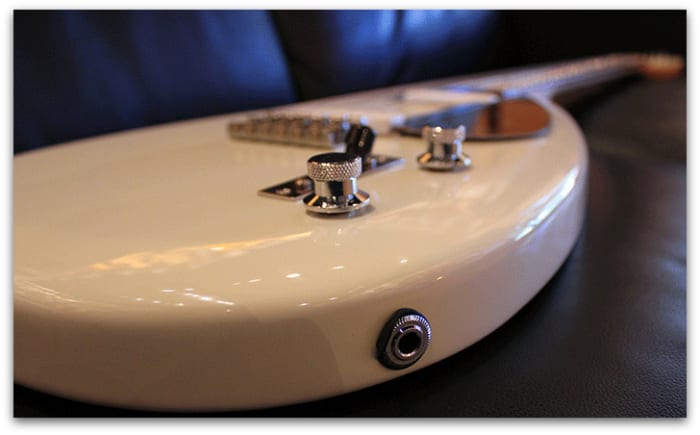Every guitarist experiences the frustration of a malfunctioning input jack at some point in their musical journey. Whether it’s a loose connection, a damaged component, or a worn-out socket, a faulty input jack can leave you stranded during practice or performance. But don’t worry, fixing a guitar input jack is a relatively simple task that you can tackle yourself with the right tools and a bit of patience. In this comprehensive guide, we’ll take you through the step-by-step process of repairing your guitar input jack so you can get back to making beautiful music in no time.

Image: nationalguitaracademy.com
Understanding Guitar Input Jack Basics
The input jack is a crucial component of your electric guitar setup, transmitting the electrical signal from your guitar pickups to your amplifier. It consists of three main parts: the socket, the sleeve, and the tip. The socket is the part that makes contact with the plug from your guitar cable, while the sleeve and tip make contact with the corresponding parts of the plug, creating the electrical connection.
Signs of a Faulty Guitar Input Jack
- Intermittent crackling or buzzing: This is often caused by a loose connection between the input jack and the guitar cable.
- Complete loss of signal: This can be caused by a damaged socket, sleeve, or tip, or by a broken wire inside the guitar.
- Excessive play in the jack: This can cause the input jack to become loose and disconnect easily from the guitar cable.
Step-by-Step Repair Guide
Before You Start:
- Gather the necessary tools: Phillips screwdriver, flat-head screwdriver, soldering iron, solder, solder suckers, wire strippers, and a multimeter (optional).
- Disconnect the guitar from its amplifier and remove the strings for safety.
Step 1: Access the Input Jack
- Turn the guitar over and locate the input jack on the body.
- Using a Phillips screwdriver, remove the screws securing the input jack to the guitar.
- Carefully lift the input jack out of the guitar body, taking care not to damage any wires.
Step 2: Inspect the Input Jack
- Visually inspect the input jack for any obvious signs of damage, such as a cracked socket or broken tip.
- Use a multimeter to test the continuity of the socket, sleeve, and tip. If any of these components show no continuity, they will need to be replaced.
Step 3: Clean the Input Jack
- Use a cotton swab or a soft brush dipped in alcohol to clean the socket, sleeve, and tip. This will remove any dirt or debris that may be causing a poor connection.
Step 4: Replace Damaged Components
- If any of the components (socket, sleeve, or tip) are damaged, you will need to replace them.
- To replace the socket, use a soldering iron to melt the solder that secures it to the input jack. Once the solder has melted, carefully remove the old socket and replace it with a new one.
- To replace the sleeve or tip, use a pair of pliers to gently squeeze the old component out of the input jack. Then, insert the new sleeve or tip into the input jack and secure it with solder.
Step 5: Reinstall the Input Jack
- Once all the components have been replaced, carefully insert the input jack back into the guitar body.
- Secure the input jack with the screws you removed earlier.
Step 6: Test the Input Jack
- Plug your guitar into the input jack and connect it to an amplifier.
- Play a few notes on your guitar and listen for any buzzing or crackling sounds. If the sound is clear and free of distortion, your input jack is repaired!

Image: www.youtube.com
Expert Insights and Tips
- To prevent future input jack problems, always use a high-quality guitar cable and avoid tugging or pulling on the cable.
- Regularly clean your input jack with a cotton swab dipped in alcohol to remove any dust or debris that may cause a poor connection.
- If you are replacing the entire input jack, choose a high-quality jack that is compatible with your guitar model.
- If you are not comfortable soldering or working on your guitar yourself, it’s best to take it to a qualified guitar technician for repair.
How To Fix Guitar Input Jack
https://youtube.com/watch?v=aUJmAi9eCHI
Conclusion
Fixing a guitar input jack is a simple task that can save you time and money. By following the steps outlined in this guide, you can restore your guitar to its former glory and get back to playing your favorite music. Remember, with a little patience and the right tools, you can keep your guitar sounding its best for years to come.







